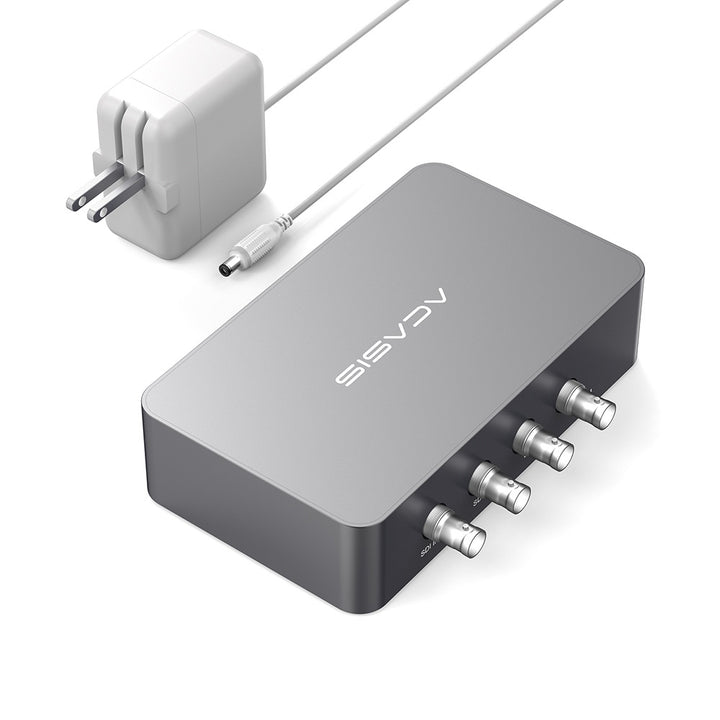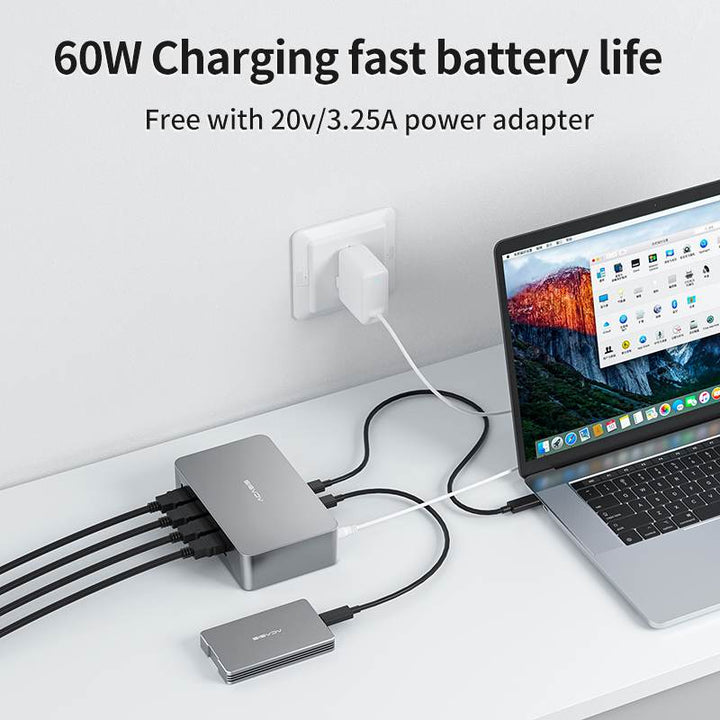Thunderbolt To Hdmi
Connect your Thunderbolt-enabled devices to HDMI displays with ease. Discover high-quality Thunderbolt to HDMI adapters for crisp and clear visuals.
Writer :raveen
Post on :Aug. 18, 2024
Last Update On :Dec. 10, 2024

Everything You Need to Know About Thunderbolt to HDMI
The evolution of technology has revolutionized how we connect devices, making it easier than ever to link laptops, tablets, and computers to external displays like TVs or monitors. One of the most versatile and powerful solutions for this is the Thunderbolt to HDMI connection. Whether you're a tech enthusiast, gamer, or professional, understanding how to use Thunderbolt to HDMI effectively can significantly enhance your experience.

What is Thunderbolt to HDMI?
At its core, Thunderbolt to HDMI refers to a method of connecting devices that use Thunderbolt ports to HDMI-supported displays. Thunderbolt is a high-speed connectivity standard designed for data transfer, charging, and video output, while HDMI (High-Definition Multimedia Interface) is the standard for transmitting audio and video signals. Together, they provide a seamless way to enjoy high-quality visuals and audio on larger screens.
Benefits of Using Thunderbolt to HDMI
Utilizing a Thunderbolt to HDMI connection comes with numerous benefits. Let’s delve into why this setup is so advantageous:
-
High-Quality Audio and Video Transmission:
- A Thunderbolt to HDMI connection supports 4K and even 8K resolutions, ensuring crystal-clear visuals.
- The HDMI component ensures audio output with no delays or distortion.
-
Versatile Connectivity:
- Thunderbolt ports can transmit data, power, and video, making them a one-cable solution.
- With a Thunderbolt to HDMI adapter or cable, you can easily connect your laptop to projectors, TVs, or monitors.
-
Plug-and-Play Functionality:
- Most Thunderbolt to HDMI setups don’t require additional software or drivers.
- Simply plug the adapter into your Thunderbolt port, and you’re good to go.
-
Enhanced Productivity:
- Ideal for professionals who need dual displays for multitasking.
- Gamers can enjoy immersive gameplay by connecting their laptops to larger monitors via Thunderbolt to HDMI.
How to Choose the Right Thunderbolt to HDMI Adapter
With various adapters available in the market, it’s crucial to choose the right one for your needs. Here’s a quick guide:
-
Compatibility:
- Ensure the adapter supports your device’s Thunderbolt version.
- Some older Thunderbolt versions may not support the latest HDMI features like 4K output.
-
Cable Quality:
- Look for a durable Thunderbolt to HDMI cable with high-speed transmission capabilities.
- Gold-plated connectors offer better conductivity and durability.
-
Resolution Support:
- If you want 4K or 8K output, ensure the adapter is HDMI 2.0 or higher compliant.
- Lower-quality adapters may not deliver the desired resolution.
-
Additional Features:
- Some Thunderbolt to HDMI adapters come with extra ports for USB or Ethernet connections.
- These multi-functional adapters can be a great investment for professionals.
Key Points to Consider
-
Compatibility Issues:
- Not all devices with Thunderbolt ports support HDMI output.
- Always check your device specifications before purchasing a Thunderbolt to HDMI adapter.
-
Cable Length Matters:
- Choose a cable length that suits your setup.
- Longer cables can introduce signal loss, so stick to shorter lengths for 4K or higher resolutions.
-
Use Certified Adapters:
- Opt for adapters certified by reliable manufacturers to avoid compatibility or quality issues.
- Certified Thunderbolt to HDMI adapters ensure smooth functionality and longevity.
Step-by-Step Guide to Setting Up Thunderbolt to HDMI
If you’re new to using Thunderbolt to HDMI, follow these steps for a hassle-free setup:
-
Check Your Devices:
- Verify that your device has a Thunderbolt port and that your display supports HDMI.
-
Get the Right Adapter or Cable:
- Purchase a Thunderbolt to HDMI cable or adapter that meets your needs.
-
Connect the Devices:
- Plug the Thunderbolt end into your laptop or PC.
- Connect the HDMI end to your TV or monitor.
-
Adjust Display Settings:
- On your laptop, go to the display settings and select the external monitor as the primary or extended display.
- Adjust resolution and orientation as needed.
-
Test the Connection:
- Play a video or presentation to ensure the audio and video work perfectly.
Common Problems and Solutions
Although Thunderbolt to HDMI is a reliable solution, you may encounter some issues. Here are common problems and their fixes:
-
No Signal Detected:
- Ensure all cables and adapters are properly connected.
- Restart your laptop or PC and reconfigure the display settings.
-
Low Resolution Output:
- Check if your adapter supports 4K or higher resolutions.
- Update your graphics card drivers for better performance.
-
Audio Not Working:
- Go to your system’s sound settings and select HDMI as the audio output device.
-
Frequent Disconnections:
- Use a certified Thunderbolt to HDMI adapter to avoid signal instability.
Why Thunderbolt to HDMI is the Future
With its ability to support high-resolution displays, fast data transfer, and power delivery, Thunderbolt technology is shaping the future of connectivity. Combining this with HDMI’s widespread compatibility creates a robust solution for users across various industries.

Conclusion
The Thunderbolt to HDMI connection is an essential tool for anyone looking to enhance their multimedia or productivity setup. Whether you’re streaming movies, playing games, or giving presentations, this versatile connection ensures high-quality performance. By understanding how Thunderbolt to HDMI works and investing in the right adapter or cable, you can unlock the full potential of your devices.
Stay ahead in the tech game by upgrading your setup with a reliable Thunderbolt to HDMI solution today!
Categories
-
Health And Wellness

-
clothing and accessories

-
Clothings

-
Gifts

-
Clothings

-
Camera

-
Footwear

-
Accessories

-
Pets Gear

-
Computer Accessories

-
Bags

-
Bags And Suitcase

-
Home Appliances

-
Vehicles

-
Fitness Equipment

-
Cars Accessories

-
Bedding

-
Vitamins and Supplements

-
Electronics

-
Games

-
Automotive Accessories

-
Flowers

-
Haircare

-
Sports Equipmet

-
Sports Equipment

-
Fruits And Vegetables

-
Hotel

-
Cosmetics

-
Automotive

-
Home Decor

-
Clothings

-
Bedding

-
Jewelry

-
Vehicles

-
Ebikes

-
tech

-
Kids Clothings

-
HairCare

-
Phones

-
Skincare

-
Games

-
Water Filters

-
Saddles

-
Apparel and Accessories

-
Body Jewelery
